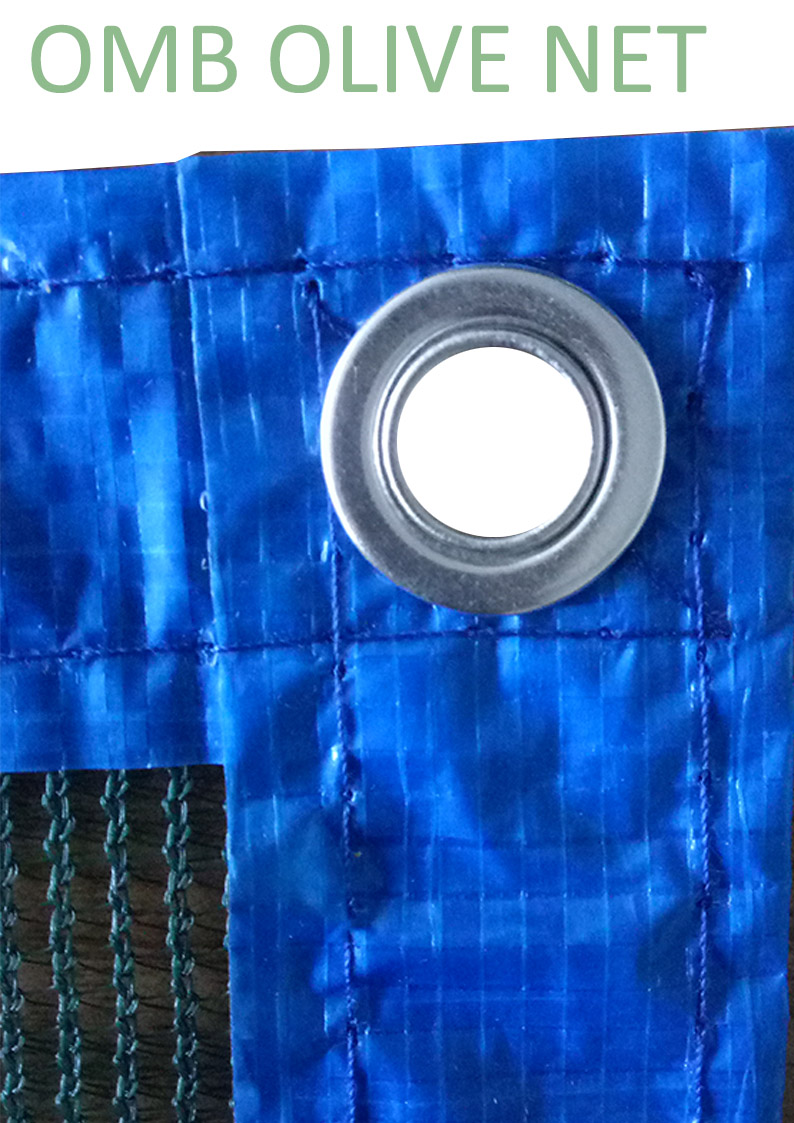
An olive net, also known as an orchard net or olive harvesting net, is a specialized net used in the cultivation and harvesting of olives. It is designed to be spread under olive trees to catch and collect the falling olives during the harvest season.
Here are some key characteristics and uses of olive nets:
1. Material: Olive nets are typically made from durable and lightweight materials, such as polyethylene or similar synthetic materials. These materials are resistant to weather conditions and can withstand the weight of the olives.
2. Size and Shape: Olive nets come in various sizes and shapes to accommodate different orchard sizes and tree configurations. They are generally available in rectangular or square shapes, with dimensions ranging from a few meters to larger sizes suitable for commercial orchards.
3. Knitted or Woven Design: Olive nets can have either a knitted or woven design. Knitted nets are more common and have smaller gaps between the threads, effectively preventing the olives from falling through the net. Woven nets have larger gaps, allowing some olives to pass through but aiding in air circulation and debris removal.
Olive nets are effective tools for facilitating the harvest of olives, helping to reduce damage to the fruit and ease the collection process. They also provide a clean and convenient surface for gathering olives, minimizing contact with the ground and potential contamination.
The olive net is used as follows:
1. Preparing the Orchard: Before the olive harvest, the orchard is typically prepared by removing any debris or weeds beneath the olive trees. This provides a clean surface for setting up the olive net.
2. Spreading the Olive Net: The olive net is laid out on the ground, ensuring that it covers the area directly under the tree canopy. The net should be spread evenly and flat, with no folds or gaps where olives could escape. If the orchard has multiple rows of trees, each row may have its own net.
3. Anchoring the Net: To prevent the net from moving or being displaced by wind, it is important to secure it by anchoring the edges. This can be done using stakes or weights placed on the outer edges of the net. The anchoring helps keep the net in position and maintain its effectiveness during the harvesting process.
4. Harvesting the Olives: Once the olive net is set up, the olives are ready to be harvested. The preferred method is shaking or combing the branches to dislodge the olives. As the olives fall, they are caught by the net and accumulate on its surface.
5. Collecting the Olives: Once the harvesting is complete, the olives can be collected from the net. This is typically done by gathering the edges of the net and carefully pouring the olives into containers, such as bins or buckets. It's important to handle the olives with care to avoid bruising or damaging them.
6. Cleaning and Maintenance: After the olives have been collected, the net should be inspected for any remaining olives or debris. The net can be cleaned by shaking or brushing off any loose olives or leaves. If necessary, it can be folded and stored in a clean, dry place for future use.
By using olive nets, the process of olive harvesting becomes more efficient and less labor-intensive, as the nets help collect the olives as they fall from the trees. The nets also help protect the olives from direct contact with the ground, reducing the risk of contamination and damage.


 英语
英语 西班牙语
西班牙语













